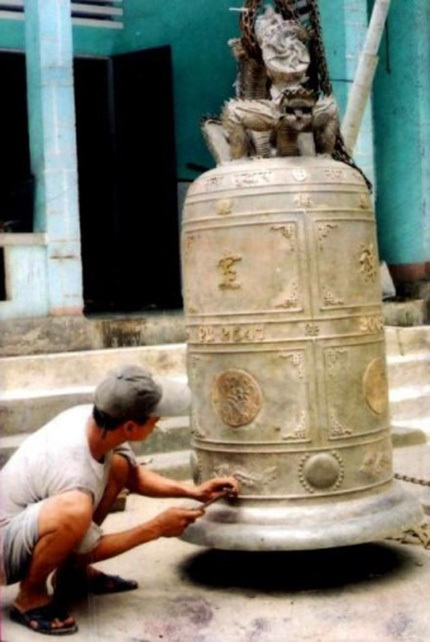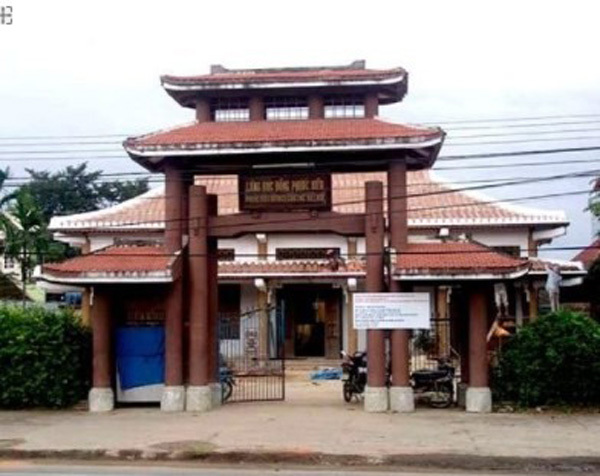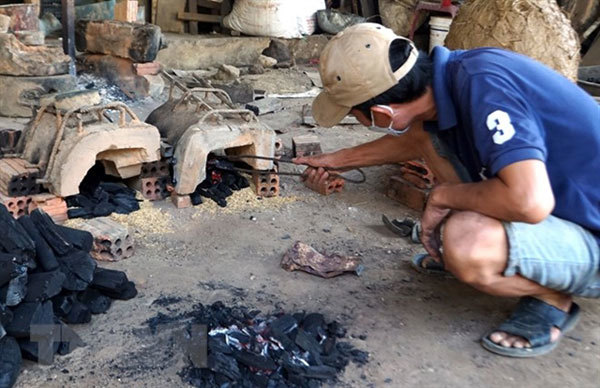Bronze casting village in midst of revival
Despite the impact of modernisation and two years of the COVID-19 pandemic, the village famous for over 400-years of bronze casting craft is focusing on keeping the fires burning to make unique products and attract visitors.
Located about 10km the ancient town of Hoi An, the village makes exceptional products bronze such as bells, gongs, incense burners, lamp holders, vases, and musical instruments.
Historical documents show the village began the craft in the 16th century when craftsmen, successors of founder Duong Khong Lo in the 11th century, moved their home in the mountain northern province of Lang Son to settle in Dien Ban and claimed 10 acres of wildland there. They named it Phuoc Kieu Village.
Followers of feudal lord Nguyen Hoang later developed the craft, and Phuoc Kieu was said to be his arsenal in the early 17th century. In the following century it was again expanded by the Tay Son army.
Its craftsmanship impressed the lords of Tay Son so much that the artisans were summoned to then capital Phu Xuan, now Hue City, to make items used in royal ceremonies, government seals and even cannons.
Duong Ngoc Tien, a senior artisan who has spent time researching the village's history, said the village's bronze casting craft started to flourish in the 1950s with its fame spreading to surrounding areas.
The 1970s was the most prosperous period for the village with hundreds of visitors coming to see, buy and try the gongs every day.
At that time, more than 200 tonnes of various products could be made every year. Artisans in the village successfully cast two bronze cannons similar to those used during the Nguyen Dynasty. Each cannon was 100kg in weight, 1.2m in length and 25cm in diameter.
"Everybody rushed to make and trade gongs, so the whole village became a workshop for casting gongs," Tien said.
Phuoc Kieu craftmanship was also popular because of the high skills used in making musical instruments, particularly gongs.
"The artisans know how to 'hear and feel' the music so they can create various types of instruments with distinctive sounds, very specific," Tien said.
However, the flourishing development was halted the 1980s onwards due to the low price of imported products.
According to elderly villagers, at that time, the bronze casting business slowed down and enered fierce challenges. Most artisans made gongs and other bronze items for ethnic minorities in the North and Central Highlands, but many lost their jobs as foreign cultures were introduced to those regions.
People no longer needed to use bronze gongs in festivals, particularly those made by local craftsmen. Instead, they preferred products made by modern machines or imported abroad.
The ancient craft faced a risk of disappearance. Despite this, the villagers were determined not to see it die out.
With support the district authority, master artisans, including Duong Nhi, Duong Ngoc Tien and Duong Ngoc Sang, vowed to restore the craft by maintaining their work and promoting their products to other regions.
They even took advantage of international and trade fairs to introduce their products to foreign customers and taught their descendants to preserve the craft.
In October 2006, the village was selected by the Vietnam National Administration for Tourism to welcome ministers the APEC summit.
The village was also willing to help protect traditional ethnic cultural treasures in other provinces.
About 15 years ago, the number of gong orchestras in the Central Highlands province of Dak Nong was alarmingly low. In a bid to solve the problem, the provincial authority decided to buy hundreds of new sets of gongs produced in Phuoc Kieu.
To keep the bronze casting going, the People's Committee of Quang Nam Province has supported a project called "Development of the Phuoc Kieu Bronze Casting Craft" to combine traditional culture with tourism.
Its reputation soon moved beyond Quang Nam and Da Nang, expanding across the ry. With its convenient location near Hoi An Old Quarter and My Son Tower tourist site, provincial and local authorities have targeted Phuoc Kieu bronze casting village as one of the most attractive destinations in the region.
Besides preserving the prestige and brand name of the village, it also attracts tourists to the village to buy its products while admiring the bronze casting.
Apart shopping, tourists to Phuoc Kieu can directly take part in the production and enjoy the performance of gongs. Every year, when spring comes with Tet (Lunar New Year), Phuoc Kieu artisans and villagers get busy organising a festival and a worshipping ceremony to pay tribute to the village's founder.
Duong Ngoc Sang, a senior artisan, said: “The ceremony is an opportunity for the descendants of Phuoc Kieu to pay tribute to their ancestors and remind younger generations of the ancient craft, creating passion among them while preserving it for the future."
The Government has just awarded Sang a certificate of merit to celebrate his 80th birthday, an honour for his nearly 70 years of working in bronze casting.
Tien, former chairman of the Phuoc Kieu Bronze Casting Association, said the village currently has about three private enterprises and seven household workshops specialising in making traditional bronze products.
Like many other handicraft villages in the ry, after a long time struggling with the pandemic, the village's more than 20 bronze casting households have returned to work, bringing jobs to over 100 people.
They expect to receive more support the Government through boosting investment in local infrastructure and production expansion to welcome more tourists, particularly as the ry's tourism returns to normal.
The passion of the local villagers looks set to ring out across many future generations to come.
Source: Vietnam News
 Chia sẻ:
Chia sẻ:

